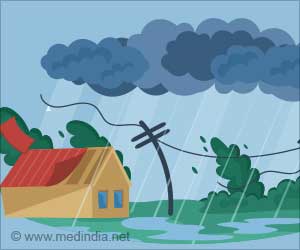Non-smokers exposed to second hand smoking have considerably reduced over time owing to adopting clean indoor air laws.

Dr. Glantz and his colleagues analyzed data from the Tobacco Use Supplement to Current Population Survey (TUS-CPS), a nationally representative household survey of tobacco use. They looked at the likelihood of a person living in a home with a 100% smokefree ban, and how that related to individual characteristics, household composition, and whether the residential region is covered by clean indoor air laws. "Living in a county fully covered by a 100% clean indoor air law in workplaces or restaurants and bars is associated with an increased likelihood of having a voluntary 100% smokefree-home rule, for both smoking and nonsmoking households," says Dr. Glantz. "The presence of children in the home makes a smokefree rule more likely."
Since the home remains a major source of second hand smoke exposure for children, this work shows that an additional justification for enacting smokefree legislation is the secondary effect of encouraging voluntary smokefree rules at home, particularly in homes occupied by smokers," concludes Dr. Glantz.
In a related study also published in the December issue of the American Journal of Preventative Medicine, researchers from the Moores UCSD Cancer Center at the University of California, San Diego found that while public health campaigns have reduced the exposure of U.S. children to second hand smoke at home, only half of U.S. households with both children and smokers had complete home smoking bans.
Utilizing data from the TUS-CPS, the researchers found that public health campaigns may not have been equally effective across demographic groups. "Among U.S. households with both children and adult smokers, the prevalence of complete home smoking bans more than tripled form 1992/1993 to 2006/2007," says lead author Karen Messer, PhD, Professor and Director of Biostatistics at UCSD Moores Cancer Center. "While this is encouraging progress, gains were smallest among African-American households, and among households with older versus younger children. There were fewer smokefree households below the poverty line, in households with less education, and in states with high smoking prevalence. Effective interventions to promote smokefree homes among smoking families are needed, and this study can help identify populations that would benefit from such interventions."
In a commentary accompanying the articles, Melbourne F. Hovell, PhD, MPH, Director of the Center for Behavioral Epidemiology and Community Health, and colleagues from San Diego State University, call for the use of mobile and other emerging technologies for real-time measurements and interventions to better understand the underlying mechanisms of observed associations, such as how public clean indoor air laws influence home smoking bans.
Advertisement
Source-Eurekalert









